Visits & Success Stories
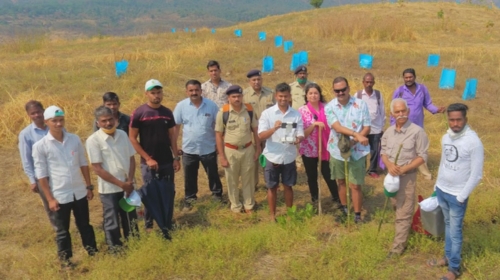
"Principal Secretary Mr. and Mrs. Mhaiskar visited the demo site, appreciated the effective use of the Saguna Vansanvardhan Technique (SVT) in preventing forest fires"
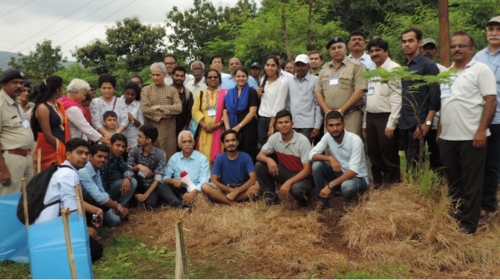
"Dr. Afroz Ahmad, esteemed Member of the Environment and Rehabilitation, Narmada Control Authority (Ministry of Water Resources, River Development and Ganga Rejuvenation), visited a demonstration site showcasing the innovative Saguna Vansanvardhan Technique (SVT) for forest fire prevention. His appreciation of our efforts underscores the success of our approach. The visit was further enriched by a productive roundtable brainstorming session, fostering collaborative insights into environmental conservation and forest management."
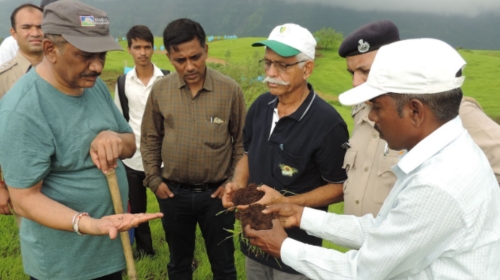
"Mr. Mohan Karnat, PCCF, Nagpur from the Maharashtra Forest Department visited the hill no 2. We showed him earthworm activity on the top of the hill."

Seen in photo (above) is Dr. Sanjay Deshmukh- an Ecologist by training, and currently Professor of Life Sciences (& formerly, Vice-Chancellor of) University of Mumbai, who lauded SVT and its standardisation at field level. The natural forest regrew effectively was demonstrated in the area where wildfire was completely arrested by SVT.
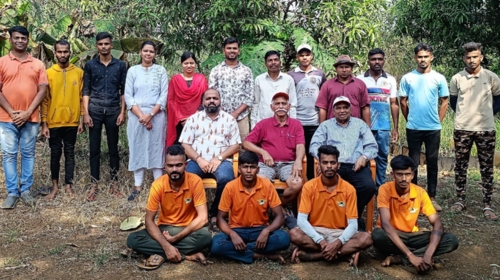
Prof K.V. Raman from Cornell University, United States recently visited Saguna Baug.

Marked enhancement of the soil quality and soil biodiversity.

Emergence of perennial water source in naturally occurring dry waterholes- 850 feet above ground level (on the hill top).

Greater percentage in quality, diversity and survival of plant species in the demonstration areas as compared to wildfire affected areas. Species such as Carissa congesta are holding ground after emergence of grasses and shrubs on the plateau.

Regulating wildfire by SVT facilitates availability of quality fodder for domestic animals of communities of the Hills.
Contour- based plantations of Vetiver grass and grid-based plantations of higher plants (such as Madhuca longifolia, Terminalia elliptica, Tectona grandis, Gmelina arborea, etc.) is the epitome of SVT that could lead to succession based climax forest conditions.

The North portion of hill #2 ( elevation 265 m) is treated by SVT method for the past 6 years promoting the healthy green cover whereas the portion below purple SVT line is barren because of burning in wildfire for the past several years. The area is under intensive regeneration process where Live Contour Bunds (LCB) of Vetiver grass are proving successful.
The Devastating Impact of Forest Fires vs. The Resilience of SVT Treated Areas

The once fiery part of hill, now transformed from their scorched and barren state, has become a serene part of hill flourishing with lush greenery and meandering streams of water.

Upper Section of the Collage: The Aftermath of Forest Fires - Loss of Organic Matter Leads to Exposed Land, Vulnerable to Sun and Rain. This Exposure Results in Gully Formation and Significant Soil Erosion. Lower Section of collage: An SVT Treated area, showcasing a lush landscape brimming with organic matter, standing resilient and erosion-free, a testament to effective forest management and fire prevention strategies.
1. Collaboration with Government Agencies: Engage with the Maharashtra Forest Department and other relevant government bodies to integrate SVT into their forest management and wildfire prevention strategies. This collaboration can include policy support, funding, and resource allocation.
2. Training and Capacity Building: Develop training programs for local forest officials, environmentalists, and community members. These programs should focus on the principles of SVT, its implementation, and maintenance. This will ensure that the technique is correctly and effectively applied across different regions.
3. Community Engagement and Awareness: Conduct awareness campaigns to educate local communities about the benefits of SVT. Community involvement is crucial for the success of such initiatives, as local residents play a key role in maintaining and protecting the environment.
4. Demonstration Projects: Establish pilot projects in various regions of Maharashtra to demonstrate the effectiveness of SVT. Success stories from these projects can be used to advocate for wider adoption of the technique.
5. Research and Development: Continue research to refine and adapt SVT to different ecological zones within Maharashtra. Collaborate with academic institutions and research organizations to monitor the impacts of SVT and publish findings.
6. Partnerships with NGOs and Private Sector: Form alliances with non-governmental organizations and private companies interested in environmental conservation. These partnerships can provide additional resources and expertise.
7. Monitoring and Evaluation: Implement a robust monitoring and evaluation system to track the progress and impact of SVT implementations. This will help in identifying best practices and areas for improvement.
8. Policy Advocacy: Work towards integrating SVT into state and national environmental policies. Advocacy efforts should highlight the technique's alignment with Sustainable Development Goals and its potential to address climate change and biodiversity loss.
9. Scaling and Replication: Once successfully implemented and proven in Maharashtra, develop a model for replicating SVT in other Indian states and potentially in other countries facing similar environmental challenges.
10. Sustainable Financing: Explore sustainable financing options, including government funding, grants from environmental foundations, and corporate social responsibility (CSR) initiatives, to support the scaling of SVT.
By following these steps, SVT can be effectively scaled throughout Maharashtra, contributing significantly to environmental conservation, wildfire prevention, and sustainable development in the region.
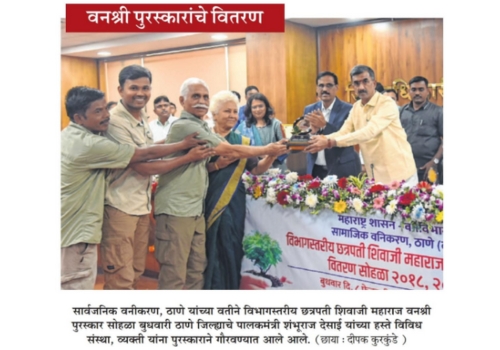
"Saguna Vansanvardhan Technique (SVT) Highly Acknowledged by the Maharashtra Forest Department"